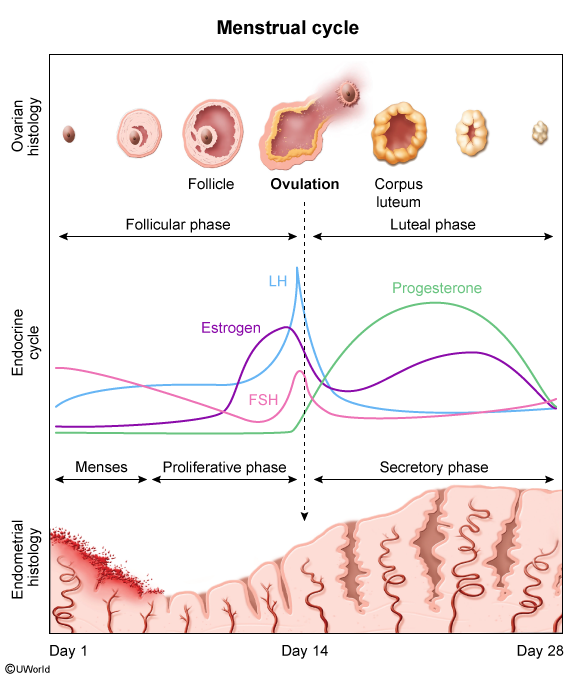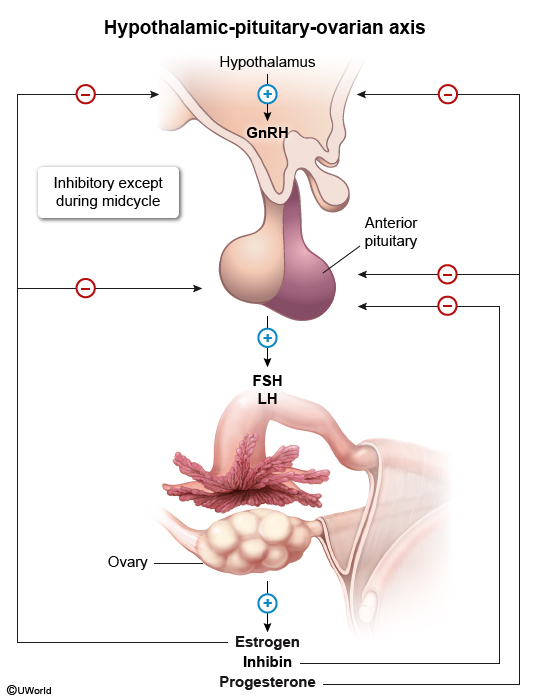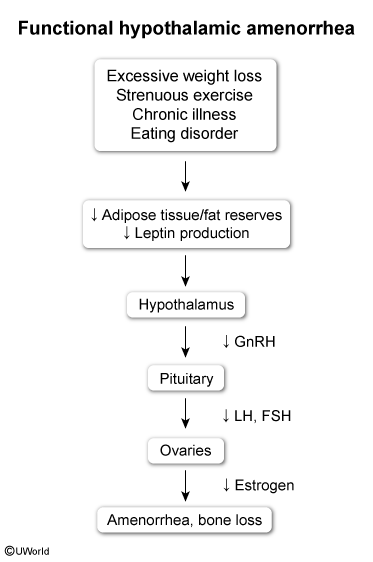Hypothalamic Amenorrhea
Article Sections
Introduction
Hypothalamic amenorrhea, also known as functional hypothalamic amenorrhea (FHA), is the disruption of pulsatile hypothalamic GnRH secretion and the hypothalamic-pituitary-ovarian (HPO) axis, impairing follicular development and leading to low estradiol levels and amenorrhea (absence of menstruation).
Pathophysiology and risk factors
The menstrual cycle (Figure 1) is controlled through the HPO axis (Figure 2), which is a tightly regulated feedback loop that requires input from all 3 levels of the axis (hypothalamus, pituitary gland, and ovaries) to achieve normal, ovulatory menstruation:
- The hypothalamus releases GnRH in a pulsatile fashion.
- The anterior pituitary gland releases gonadotropins (FSH, LH) in response to GnRH.
- The ovary releases estradiol from a cohort of developing follicles in response to FSH, resulting in ovulation.
FHA results from disruption at the level of the hypothalamus that causes diminished or abnormal GnRH release (
Continue Learning with UWorld
Get the full Hypothalamic Amenorrhea article plus rich visuals, real-world cases, and in-depth insights from medical experts, all available through the UWorld Medical Library.
Figures


